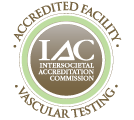Excellent results long-term for the Wallstent in iliofemoral venous disease
LONG-TERM CLINICAL OUTCOMES AND TECHNICAL FACTORS WITH THE WALLSTENT FOR TREATMENT OF CHRONIC ILIOFEMORAL VENOUS OBSTRUCTION
CHICAGO, Illinois – January 2019 – A single-center experience using the Wallstent for iliofemoral venous obstruction reveals excellent outcomes.
Placement of large diameter stents has become the mainstay treatment of symptomatic iliofemoral venous occlusion. However, factors affecting the clinical outcome and durable stent patency remain incompletely understood.
Perhaps the most common and time-honored stent to be used in such a scenario is the Wallstent (Boston Scientific). Although initially created to treat biliary tract obstruction, this device has been used extensively in the endovascular treatment of venous occlusive diseases because of its large diameter.
While the use of the Wallstent in venous disease has been widespread, shortcomings such as less radial force at the ends and significant shortening remain issues in its deployment. As such, long-term assessment of its usage is now appropriate given first generation, dedicated venous stents are currently in clinical trial.
As reported in the January edition of the Journal of Vascular Surgery: Venous and Lymphatic Disorders, researchers from The Vascular Experts in Darien, Connecticut, led by vascular surgeon Paul Gagne, MD, have performed a retrospective review of their experience with the Wallstent to treat iliofemoral venous obstruction. Herein they present their results of 77 limbs in 67 consecutive patients treated from 2007-2014.
Their series of patients were characterized as:
- 55% male,
- Median age 63 (range 47-83 years),
- 62% left-sided, with a
- Median baseline Venous Clinical Severity Score (VCSS) score of 9 (3-23).
The deployed Wallstents ranged in:
- Diameter from 10-22mm, and
- Length from 40-90mm, with
- 82% being 14-18mm in diameter.
Additionally, 22% of stents were deployed into the common femoral vein while 8% involved the inferior vena cava.
With regards to patency, at 72 months, those treated for:
- Non-thrombotic disease had a:
- Primary patency 97%
- Primary assisted patency 100%
- Secondary patency 100%, while those treated for:
- Thrombotic disease had had a:
- Primary patency 75%
- Primary assisted patency 88%
- Secondary patency 88%.
At a median follow up of 26 months, 68% of patients showed a >4 point VCSS improvement, with none with worse symptoms.
Multivariate regression analysis revealed that only common femoral vein involvement predicted loss of primary patency (4.4 times more likely). Post-thrombotic lesions had loss of primary patency 6.9 times more likely, but this did not reach statistical significance (P value of 0.07).
“Our experience found that stenting of chronic iliofemoral venous obstruction resulted in excellent long-term patency rates and significant clinical improvement for a majority of patients. Although the Wallstent presents certain technical challenges, we have optimized our technique to work through these challenges to achieve good result,” notes Dr. Gagne.
He further states that, “The analysis of most and least improved limbs found that improved outcomes were observed in patients who presented with more severe venous disease. The most improved subset was disproportionally composed of C6 patients with open ulcers, whereas one-third of the C3 patients treated in the overall series were among the least improved.”
Until randomized clinical trials confirm better efficacy for dedicated venous stents than conservative management, this important well documented series brings additional evidence to the long-term patency and clinical improvement afforded patients following use of the Wallstent for iliofemoral venous obstruction.



